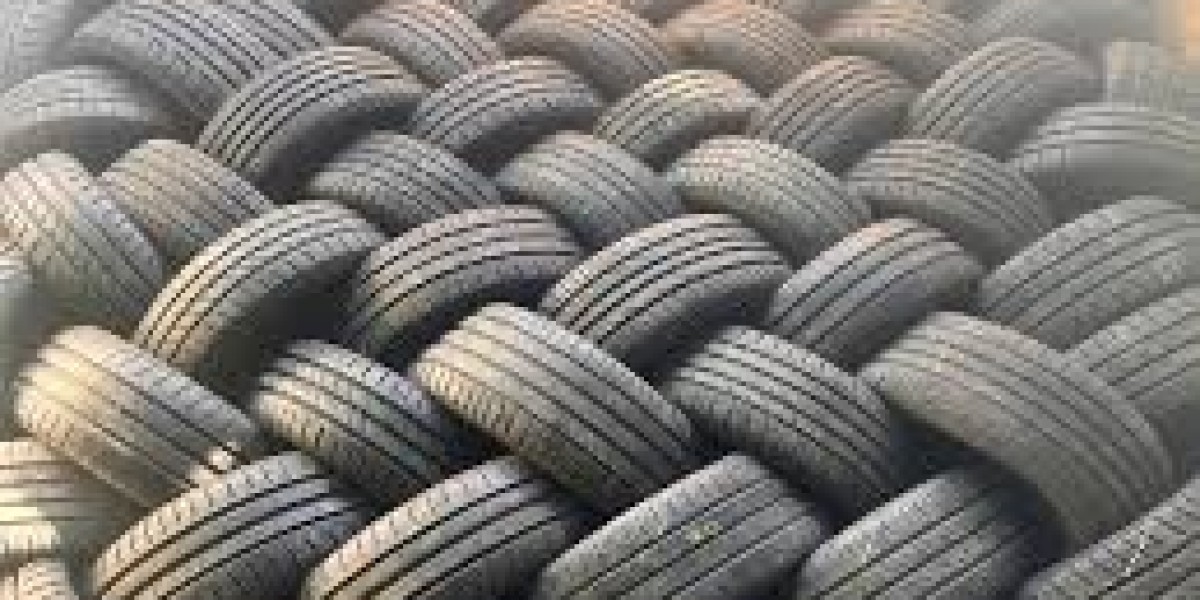As the mercury drops and winter tightens its grip, the roads transform into a perilous landscape of ice, snow, and slush. In such conditions, the right tyres are not merely a recommendation; they are a critical safety component. Winter tyres, specifically engineered with unique rubber compounds and tread patterns, offer superior grip and control in cold temperatures (below 7°C). However, the upfront cost of a full set of new winter tyres can be substantial, leading many drivers to eye "part-worn" winter tyres as an enticing, seemingly cheaper alternative. This article delves into the complexities of part-worn winter tyres, scrutinizing their legality, safety implications, true cost-effectiveness, and the inherent dangers of chasing the "cheapest" options, ultimately advocating for new tyre purchases whenever possible.
The Allure of Part-Worn Tyres: A Budgetary Mirage
Winter Part-worn tyres are simply pre-used tyres, sold at a fraction of the cost of their brand-new counterparts. Their appeal lies almost exclusively in their lower price point, making them attractive to motorists facing budget constraints or those needing a quick, temporary replacement. Many part-worn tyres originate from countries with stricter tread depth regulations, where tyres are replaced with considerable "usable" tread remaining by UK standards (e.g., tyres changed at 3mm in some European nations, while the UK legal minimum is 1.6mm). Others may come from salvaged vehicles.
Legality vs. Reality: The Risky Business of Part-Worn Tyres
In the UK, the sale and purchase of part-worn tyres are legal, but they are subject to stringent safety regulations outlined in The Motor Vehicle Tyres (Safety) Regulations 1994. Key stipulations include:
Minimum Tread Depth: A minimum of 2mm of tread depth across the entire breadth and circumference of the tyre. This is a higher standard than the general 1.6mm legal minimum for any tyre, acknowledging the reduced life of a part-worn tyre.
Structural Integrity: Tyres must be free from any cuts, bulges, tears, or exposed cords, both internally and externally. Any repairs must meet British Standard BS AU 159f.
Inflation Test: They must pass an inflation test prior to sale.
"PART WORN" Marking: All part-worn tyres must be permanently and legibly marked with "PART WORN" in capital letters at least 4mm high, adjacent to every approval mark. This is a crucial indicator that the tyre has supposedly undergone proper inspection.
The Troubling Reality: Despite these regulations, numerous investigations by organizations like TyreSafe and Trading Standards have repeatedly exposed a alarming reality. A significant majority of part-worn tyres sold often fail to meet these legal and safety standards. Studies have shown that over 90% of retailers were found to be non-compliant, and a large percentage of tyres inspected were unsafe to return to the road. Common issues include:
Hidden Internal Damage: Damage from previous impacts, under-inflation, or improper use may not be visible externally but can severely compromise the tyre's structural integrity, leading to sudden and catastrophic failure, especially at speed. X-ray examination, which is not legally required for part-worns, would be needed to detect such flaws.
Insufficient Tread Depth: Many tyres are sold with less than the legal 2mm for part-worns, or with uneven wear that quickly falls below the safe threshold.
Substandard Repairs: Repairs may not adhere to British Standards, making the tyre unreliable and prone to failure.
Age-Related Degradation: Tyres, regardless of tread, degrade over time. The rubber hardens and cracks, reducing grip, particularly in cold conditions. Investigations have found alarmingly old tyres being sold.
Lack of "PART WORN" Marking: The absence of the mandatory "PART WORN" stamp is a clear indication that the tyre has not been properly inspected and is being sold illegally.
The overwhelming consensus from tyre safety experts, motoring organizations, and reputable garages is that the risks associated with part-worn tyres far outweigh any initial cost savings. The inherent unpredictability of their history can lead to compromised vehicle safety, extended braking distances, reduced handling, and a significantly increased risk of accidents.
Winter Part-Worn Tyres: An Even Greater Compromise
The concerns surrounding part-worn tyres are intensified when considering them for winter use. Winter tyres are meticulously designed to perform in specific cold-weather conditions, relying on a unique blend of features:
Specialized Rubber Compound: This compound remains flexible in temperatures below 7°C, maintaining grip on cold, wet, or icy surfaces where summer tyres would harden and lose traction.
Aggressive Tread Patterns: Deeper grooves and a high density of sipes (small, intricate cuts) actively bite into snow and ice, evacuating water and slush to provide maximum contact with the road.
When a winter tyre is part-worn, its effectiveness in these critical areas is severely diminished:
Compromised Sipe Performance: The sipes, crucial for snow and ice traction, are most effective when the tread depth is significant. A part-worn winter tyre with minimal tread will have compromised siping, leading to substantially poorer performance in snowy and icy conditions compared to a new winter tyre. The very reason for buying a winter tyre – superior grip in extreme conditions – is undermined.
Unknown Compound Condition: The history of a part-worn tyre is unknown. It might have been exposed to harsh conditions, incorrect storage, or simply be older than ideal, leading to a hardened rubber compound that negates the fundamental advantage of a winter tyre in cold weather.
In essence, a part-worn winter tyre, while perhaps marginally better than a summer tyre in winter, cannot compare to the safety and performance offered by a new, full-tread winter tyre. It represents a significant and potentially dangerous compromise on safety for minimal initial savings.
The "Cheapest" Part-Worn Winter Tyres: A Dangerous Illusion
The pursuit of the winter part-worn tyres cheapest often leads down a path of false economy and heightened risk. While the upfront cost might be 40-50% less than new tyres, this saving is typically short-lived and overshadowed by numerous disadvantages:
Significantly Shorter Lifespan: A new tyre typically starts with 8mm of tread. A part-worn tyre, even if legally sold with 2mm, has a substantially reduced usable lifespan. This means you'll need to replace them much sooner, leading to more frequent purchases and, ultimately, a higher cost per usable millimeter of tread. In many cases, new budget tyres can actually be more cost-effective over their full lifespan.
Increased Risk of Premature Failure: Due to their unknown history and potential hidden damage, part-worn tyres are far more susceptible to punctures, sidewall failures, or blowouts. These unforeseen incidents lead to unexpected replacement costs and can be incredibly dangerous.
Compromised Fuel Efficiency: Tyres with less tread or uneven wear can sometimes increase rolling resistance, leading to slightly reduced fuel efficiency over time.
The Unquantifiable Cost of Safety: The most critical "cost" associated with part-worn tyres is the potential compromise to safety. An accident caused by tyre failure can result in severe injuries, fatalities, extensive vehicle damage, and legal repercussions – costs that far eclipse any initial savings on the tyre itself.
Where to Find (and Avoid) Part-Worn Winter Tyres
Part-worn tyres are typically found at independent tyre dealers, certain online marketplaces, and sometimes even at scrap yards. However, given the prevalent issues of non-compliance and unsafe practices in the part-worn market, extreme caution is paramount. It is highly advisable to avoid purchasing part-worn tyres from unknown or unverified sources.
If, against expert recommendations, you choose to consider part-worn winter tyres, you must adhere to these guidelines:
Only from Reputable Dealers: Seek out dealers with strong reputations, positive reviews, and a transparent inspection process. They should be able to clearly demonstrate how they ensure compliance with all legal requirements.
Insist on the "PART WORN" Marking: Legally, every part-worn tyre must be stamped with "PART WORN." Do not purchase any tyre lacking this clear and permanent mark. Its absence indicates an illegal sale.
Thorough Visual and Manual Inspection: Before purchase, meticulously check for cuts, bulges, cracks, exposed cords, or uneven wear. Request to see the inside of the tyre to check for patches or irregular wear patterns.
Verify Tread Depth: Always bring a reliable tread depth gauge. Ensure the tyre has at least 2mm of tread depth across its entire surface. For winter performance, aiming for 4mm or more would be a slightly safer, albeit still compromised, choice.
Check Tyre Age: Locate the DOT code on the sidewall (four digits indicating week and year of manufacture, e.g., 5118 for the 51st week of 2018). Tyres older than 5-6 years, even with adequate tread, can suffer from rubber degradation, significantly impacting performance, especially in cold conditions.
Be Skeptical of "Bargains": If the price seems "too good to be true," it almost certainly is. Extremely low prices often indicate a significant compromise on safety or legality.
Safer Alternatives to Part-Worn Winter Tyres
For genuine safety, reliability, and long-term value, consider these superior alternatives to part-worn winter tyres:
New Budget Winter Tyres: Many reputable tyre manufacturers offer budget-friendly winter tyres. While costing more upfront than part-worns, they provide full tread depth, a manufacturer's warranty, and guaranteed structural integrity. Over their lifespan, these often prove more cost-effective due to their durability and superior performance.
All-Season Tyres: In regions with milder winters (where heavy snow and ice are rare), high-quality all-season tyres can offer a viable compromise. They are designed to perform adequately in both summer and light winter conditions, eliminating the need for seasonal tyre changes. However, they are not a substitute for dedicated winter tyres in severe winter climates.
Saving and Planning: If purchasing new winter tyres immediately presents a financial challenge, consider saving up or exploring payment plans offered by reputable tyre retailers. Prioritizing safety through proper tyre investment is a wise long-term decision.
Conclusion
The appeal of "cheapest" part-worn winter tyres is undeniable in challenging economic times. However, this appeal masks a dangerous reality. The unpredictable history, increased risk of hidden damage, diminished performance in critical winter conditions, and significantly shorter lifespan make them a precarious choice. When it comes to the only part of your vehicle connecting you to the road, compromising on quality and safety is a gamble that carries potentially severe consequences. For peace of mind, optimal performance, and the safety of yourself and others, investing in new, high-quality winter tyres, even budget-friendly options, remains the unequivocally responsible and ultimately more cost-effective decision.








